More new charter schools took ISTEP for the first time in 2015 — and some of them did very well.
Among the ten charter schools in the city that had the highest percentage of students who passed the state exam last year, three were new schools whose students took ISTEP for the first time.
Two of those schools are affiliated with the Tindley Accelerated Schools charter school network — Tindley Renaissance and Tindley Summit academies — giving the network four spots among the top 10 charter schools in the city for ISTEP passing percentage.
In 2015, 26 charter schools in the city took the exam, up from 18 last year. The increase comes as the city has seen a dramatic increase in the total number of charter schools. All charter schools must take the annual exam but some schools initially enroll younger students who won’t take the exam until they enter third grade. The test is given to students in grades 3-8.
Chalkbeat in recent weeks highlighted the top 10 IPS schools that beat odds on the 2015 exam and the 10 IPS schools that ranked lowest for percent passing ISTEP. In the coming weeks, stories on the lowest scoring charter schools and the top and bottom ranked township and small city schools in Indianapolis will follow.
Tindley has had a difficult year outside the classroom. It has struggled financially after enrollment did not keep up with its ambitious expansion plan. Questions also were raised about the network’s spending and borrowing practices. That was followed by the resignation of CEO Marcus Robinson.
But when it came to ISTEP, the four Tindley schools where students took the exam all posted strong results. All four Tindley schools exceeded the 29 percent passing rate, which was the districtwide average Indianapolis Public Schools. Three Indianapolis charter schools also beat the state average. In all, 11 Indianapolis charter schools exceeded the IPS passing rate. But the majority — 15 charter schools — scored below the IPS average.
Paramount School of Excellence took over the top spot on the ranking in 2015 from the prior year’s No. 1, Tindley Collegiate Academy. Paramount, Tindley Collegiate and the Hoosier Academy of Indianapolis, a hybrid school with some courses taught online and some in classrooms, had passing rates above the statewide average of 52.5 percent. By comparison, four of the 59 IPS schools that took ISTEP scored above the state average. Here’s a look at the charter schools that landed in top ten:
Paramount School of Excellence
A community-based charter school on the East side of Indianapolis, Paramount School of Excellence has been rising up the ranking when it comes to passing ISTEP for several years.
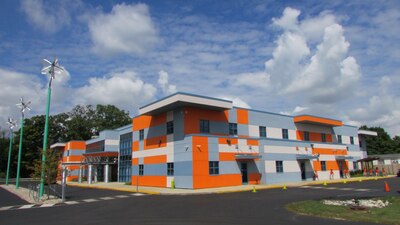
Its 65.6 percent passing rate was well above IPS and state averages and placed the school among the top 15 scorers in Marion County. That passing rate was better also than most township schools.
The school’s passing rate, like nearly all schools in the state last year, fell from the prior year. But it’s test score drop of 13 percentage points was smaller than the average 19 percentage point drop at schools around the state.
Paramount is known as the school where students grow fruits and vegetables and raise animals, and its scores have been on the rise. Its state grade improved to an A from a D in 2014 over three years.
The school serves about 653 students in grades K to 8. It is also known for its racial balance. About 48 percent of the school’s students are black, 28 percent are white, 14 percent are Hispanic and 10 percent are multiracial.
About 84 percent of the students are from families poor enough to qualify for free and reduced-price lunch. To qualify, a family of four must earn less than $44,863 annually. By comparison, at the average IPS school 71 percent of students are poor enough to qualify for meal assistance.
About 6 percent of students at Paramount are English language learners and 16 percent were in special education in 2014-15, the last year for which data was available. That’s compared to IPS where the 16 percent of students are English-language learners and 18 percent are in special education.
The school is locally managed and not part of any network.
Tindley Collegiate Academy
Tindley Collegiate Academy, on the northeast side of Indianapolis, is the network’s girls-only middle school.

The school, which opened in 2013, serves 316 girls in grades 5-8. About 58 percent of its students passed ISTEP last year, down 27 percentage points from 2014. But its passing rate was still good enough to beat the IPS average and put the school in second place among city charter schools.
About 76 percent of Tindley Collegiate’s students come from families that are poor enough to qualify for free or reduced-price lunch.
The school is 92 percent black, 5 percent multiracial, 1 percent white and 1 percent Hispanic, making it one of the city’s most racially isolated schools.
By comparison, IPS averages districtwide are 50 percent black, 20 percent white and 23 percent Hispanic.
About 13 percent of the school’s students are in special education classes and none were English language learners in 2014-15, the last year for which data is available.
Tindley is a local charter school network based in Indianapolis that has opened all of its schools in and around the Avondale Meadows neighborhood.
Hoosier Academy of Indianapolis
The Indianapolis campus of this school is a hybrid through which students do some coursework online and some at the school. It serves about 240 students in grades K-8.
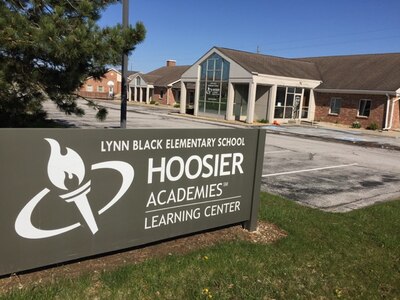
With nearly 58 percent of students passing ISTEP in 2015, the school beat the state average and appeared for the first time among the top 10 charter schools. Its passing rate fell 10 percentage points from the prior year, a smaller drop than most schools in the state.
Hoosier Academy Indianapolis serves a wealthier and less diverse student body than most charter schools in the city. Only about 20 percent of its students are poor enough to qualify for free or reduced-price lunch. About 72 percent of students are white, 22 percent are black and 2 percent are Hispanic.
About 19 percent of students are in special education and less than 1 percent are learning English as a new language.
The school has an online-only statewide sister school, Hoosier Academies Virtual School. Both are affiliated with K12, a national for-profit company that supports a nationwide network of online charter schools.
Irvington Community School
Located on the East side, Irvington Community School held steady on a tougher ISTEP.
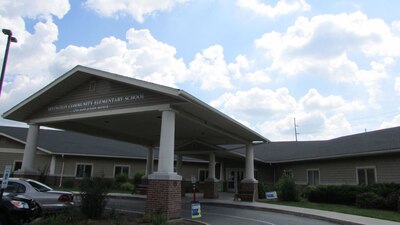
For several years, the school has scored just above or just below the state’s average passing rate for ISTEP. That was true again in 2015. With 51.7 percent of students passing, Irvington was just below the state average.
Irvington’s passing rate fell 19 percentage points from 2014, exactly the average drop for the typical Indiana school.
The large school serves 1,043 students in grades K to 12. It is less diverse than most Indianapolis charter schools. About 70 percent of students are white, 11 percent are black and 9 percent are Hispanic. About 62 percent of students qualify for free or reduced-price lunch.
Less than 2 percent of students are English-language learners and about 14 percent were in special education in 2014-15, the last year for which data was available.
The schools is locally managed and not part of any network.
Tindley Renaissance Academy
The Tindley network opened this elementary school in 2013. In its first year reporting ISTEP scores, Tindley Renaissance nearly reached the state average passing rate at 51 percent.
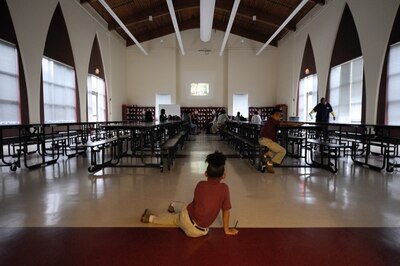
The school was the Tindley network’s first foray into elementary school grades after starting with middle and high schools.
Tindley network schools have proven unusually adept at posting high passing rates quickly on ISTEP. Even most high-scoring charter schools have seen their scores rise more slowly over several years.
The school serves about 411 students on the city’s Northeast side. About 75 percent of students are poor enough to qualify for free or reduced-price lunch. The school is 94 percent black, 2 percent Hispanic and less than 1 percent white.
About 10 percent of students were in special education and Tindley Renaissance had no English language learners in 2014-15, the last year for which data is available.
Tindley Preparatory Academy
The Tindley network’s first expansion was Tindley Preparatory Academy, an all-boys middle school that opened in 2012.
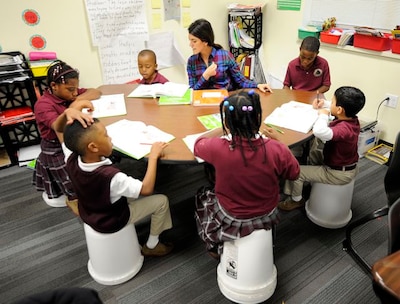
It posted a top 10 passing rate again among charter schools in 2015.
About 49 percent of students passed the exam, down 26 percentage points from the prior year. That was a bigger drop than the average Indiana school but not enough to knock Tindley Prep from the top 10.
The school, located in Northeast Indianapolis, has an enrollment of 227 students in grades 5-8, and about 76 percent qualify for free or reduced-price lunch.
The school is about 91 percent black, 5 percent multiracial, 1 percent white and 1 percent Hispanic.
About 19 percent of students were in special education and less than 1 percent were English language learners in 2014-15, the last year for which data was available.
Christel House Academy South
The south campus of Christel House was the network’s first school and is one of the oldest charter schools in the state. It has generally ranked high for percent of students passing ISTEP.
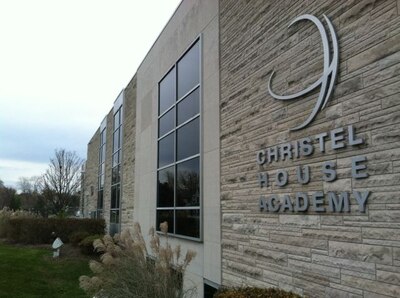
In 2015, about 45.5 percent of students passed the test, down about 26 percentage points from the prior year. That was a bigger drop than the average Indiana school saw on the tougher ISTEP exam.
The school is part of a worldwide network of schools run by Indianapolis philanthropist Christel DeHaan. It has a sister school on the city’s West side and is also connected to high schools that work with at-risk students who have dropped out of other schools.
Christel House South appears to have moved passed controversies from recent years when it argued lower test scores and state grades it received were driven by errors in ISTEP scoring and unfair treatment that its leaders said affected the school and others with unusual grade configurations.
About 94 percent of students who attend the school are from families that are poor enough to qualify for free or reduced-price lunch. The school is very diverse, with about 46 percent of students who are Hispanic, 30 percent who are white and 16 percent who are black.
About 12 percent of students were in special education and 25 percent were English language learners in 2014-15, the last year for which data was available.
Avondale Meadows Academy
A consistently high-scoring school on ISTEP, Avondale Meadows Academy saw about 44 percent of students pass ISTEP in 2015.
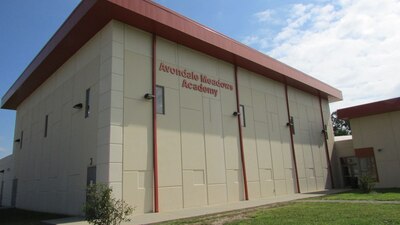
Formerly known as the Challenge Foundation Academy, the school’s passing rate dropped by 28 percentage points, a bigger drop than the average Indiana school on the new, harder ISTEP exam.
The school serves 469 students in grades K to 5. It is located close to several Tindley Accelerated Schools in the Northeast Indianapolis neighborhood known as Avondale Meadows. It is part of a fledgling local charter school network, with a sister school opening in 2014 north of downtown known as Visions Academy, but is no longer affiliated with the Challenge Foundation.
About 70 percent of students qualify for free or reduced price lunch. The school is about 95 percent black, 3 percent multiracial and 2 percent white.
About 14 percent of students were in special education in 2014-15, the last year for which data were available.
Tindley Summit Academy
Another recently opened school that was part of the rapid expansion of the Tindley Accelerated Schools network, Tindley Summit Academy opened in 2014 and serves students in grades K to 4.
About 44 percent of students passed ISTEP in 2015, which was the first year the school reported scores.
The school is part of cluster of high-scoring Tindley schools located on the city’s Northeast side.
Tindley Summit serves 292 students.
About 78 percent of students come from families that are poor enough to qualify for free or reduced-price lunch.
The school is 90 percent black, 5 percent Hispanic and 1 percent white.
About 10 percent of students were in special education and 4 percent were English language learners in 2014-15, the last year for which data was available.
Phalen Leadership Academy
Phalen Leadership is the flagship school for an emerging charter school network based in Indianapolis run by Earl Martin Phalen. In its first year reporting ISTEP scores in 2015, the school saw about 39 percent of students pass ISTEP and made the city’s top 10 list for charter school test performance.
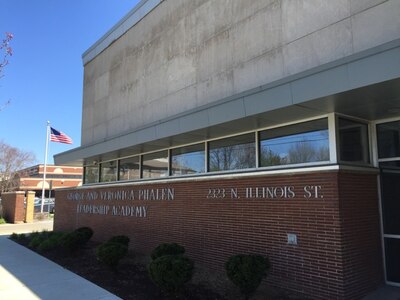
Phalen, a one-time foster child and former Harvard Law School classmate of President Obama, came to Indiana in 2009 after being selected as a Mind Trust “education entrepreneur fellow.”
From that fellowship, Phalen invented Summer Advantage, a program that aims to help low income children advance, rather than backslide, during summer break. Building on the success of that program, he launched the Phalen Leadership Academy and the charter network now also operates IPS School 103 under a contract with the district.
The school is located on the North side of downtown and serves 325 students in grades K to 4. About 77 percent of students are from families that are poor enough to qualify for free or reduced price lunch.
The school is 91 percent black, 4 percent white and 1 percent Hispanic. About 5 percent of students were in special education and less than 1 percent were English language learners in 2014-15, the last year for which data is available.
Other charter schools exceeding the IPS district average:
Southeast Neighborhood School of Excellence. SENSE fell out of the top 10, but the school’s 31 percent passing rate was higher than the IPS average. It was the only other Indianapolis charter school with a passing rate above the district’s rate. It’s passing rate fell by 24 percentage points from the prior year.

